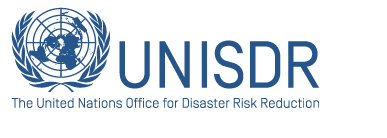-Legislation for disaster risk reduction could provide support to this issue. In fact, the Latin American Parliament called for the creation of specific commissions, so that they could legislate on disaster risk reduction-related issues. You also have experience as a legislator. Have there been contributions or some progress in this regard?
Legislation involves a number of sectors that make it possible for cities to increase their level of safety and build their resilience capacity. An example is existing construction standards. For instance, the Institute for Structural Safety was created with the purpose of ensuring that those responsible for building different types of buildings, both companies and their consultants, follow all structural calculation standards in case of earthquakes.
This is one of the laws we currently have. There are other rules that regulate what we do with rainwater in the city. We already know that huge construction projects are underway. For instance, a tunnel is being built to increase by 40 percent the city’s drainage capacity, but there are also new laws and rules that force you to recover the city’s rainwater.
Regarding the climate change act, the city was the first one, or at least one of the first ones to pass such a law. It lays out the rules of the game in order to reduce greenhouse gas emissions, and naturally, we also have a set of rules for civil protection. This includes the creation of its secretariat and a local civil protection law, which establishes most of its principles. In sum, there are significant efforts regarding legislation.
-Could we highlight the importance of creating or strengthening a citizen culture?
--Our natural tendency is to say “I don´t want you to worry me! I don´t like issues that are difficult to address. I know it is an earthquake-prone area but don´t remind me”. To break this inertia we address each activity area and make recommendations that are even playful or fun, intended for many community sectors, particularly children and youth. We have done well.
To answer your question, have we made some progress in raising awareness?... Yes. Are we done?... No, but we are on the right track. I think that we are better prepared today than we were a few years ago.
We have talked about the progress made, what about existing hindrances?
- I would say that the main hindrance is that we have to compete with the issue of the current economic crisis, which monopolizes the attention of leaders and society at large. Hence, issues like the ones we are covering here are set aside. This could be a risk or even the greatest risk.
To a large extent, resistance to issues related to climate change and disaster preparedness stem from the economic crisis that started in 2008. All priorities were related to financial issues and, of course, the consequences of this crisis, such as employment, etc.
The challenge –or the problem- was how to promote topics such as climate change or disaster preparedness within an economic crisis scenario in Europe, the United States, China and the rest of Asia.
What was the solution we found? We worked a lot with our cities because that’s where the problems we are talking about happen on a daily basis. You have to face them, and I think this is clear to mayors and heads of government, despite the fact that we are facing an economic crisis.
-We examined some of the resilience building actions and Mexico City’s participation in the world campaign fostered by the UNISDR. What else needs to be done?
-Well, there are always things to do. What we lack most is time because it is almost impossible to finish everything you need to do, but one of the things that needs to be done during this and the years to come is for the city to present on what we have learned from this campaign so that our experience is replicable.
We must consider what other cities have learned during this period as well, since this could also be replicable. This could be our next step. We must also provide support so that this issue is included as a line item in national budgets. There should be funds available for cities to implement projects, for supporting and sponsoring cities with this type of programs. These actions should be taken worldwide.
|
-In November 2010 you were acknowledged as a champion of the world campaign “Making cities resilient: My city is getting ready!” because of your leadership and for advancing local actions to promote more resilient nations.
In your opinion, which was your main achievement or contribution to the campaign?
-We received a great deal of support from the United Nations so that we could develop what I call a “wider program” aimed at training a cadre of officials that work for the city government, so that they could respond to an emergency or a disaster. This is also related to the lessons learned in many disasters, which might be translated into saving more lives. We paid close attention to this topic.
We invited many other cities to participate so that they could realize that this is a central issue. There are cities that are not necessarily thinking about medium-term risks or that have not put in place this type of programs.
We held a dialogue with many cities around the same issue: climate change or risk reduction. That way we could share important experiences. I think that this was our major achievement between 2010 and 2012.
|




